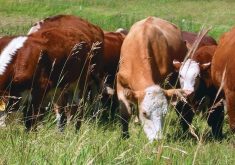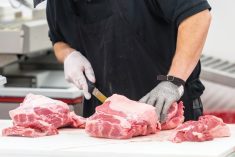The latest U.S. Agriculture Department data shows the smallest Dec. 1 U.S. hog herd in four years, indicating that U.S. hog producers pocketed profits from this year’s high hog prices rather than investing them in herd expansion.
Worries about high feed grain prices likely thwarted expansion, analysts said. Corn prices are above $6 per bushel, well above the $3.50 to $5 seen earlier this year.
“It doesn’t look like we are expanding at all. It says we are moving sideways,” Ron Plain, University of Missouri agricultural economist, said of the report. “The impediment is concerns about sky-high feed costs.”
Read Also

Canada seventh on agri-food influence
Comparison of 19 G20 countries says Canadian agri-food needs investments, processing, action on retail consolidation to realize potential
USDA said the hog herd as of Dec. 1 was 64.325 million head, the smallest for that date since 2006 and down 0.8 per cent from a year earlier. The breeding herd was 5.778 million head, down 1.2 per cent from a year before.
USDA’s numbers were slightly on the bullish side of trade estimates. However, analysts said the data may have been priced into the futures and they doubted there would be much of a price reaction.
“The numbers are mostly OK, maybe a slightly bullish reading,” said Rich Nelson, analyst with Allendale Inc.
With corn at $6 per bushel, economist Plain said producers will need hog prices in the low $80s per hundredweight on a carcass basis to break even. As a result, they could be losing money late this year and early next since Chicago hog futures suggest prices then will be in the mid-to high $70s.














